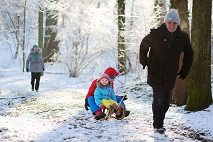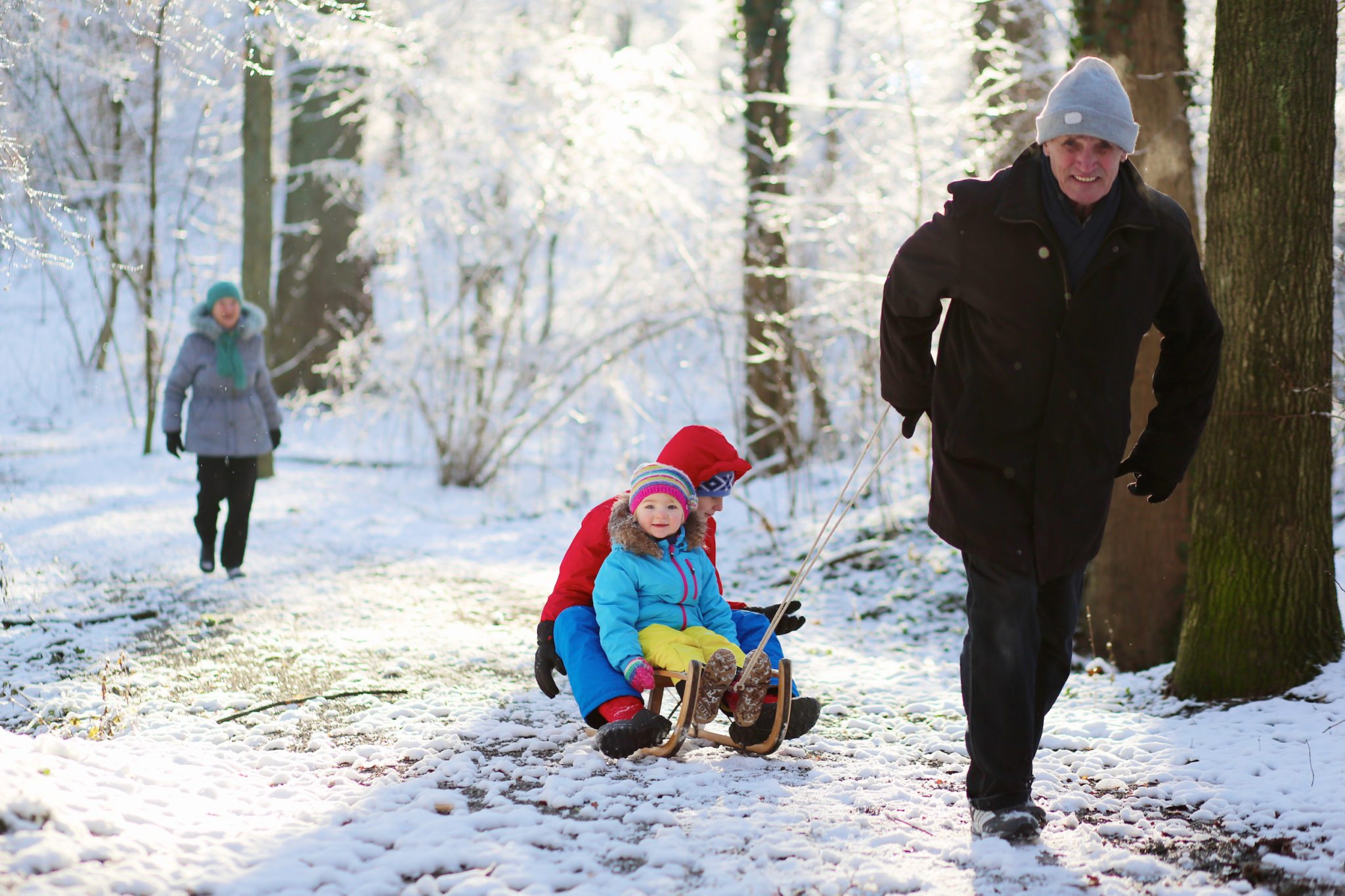5 Ideas for Exploring Nature with Kids this Winter

In the mid-Atlantic region, we tend to experience a winter of wild temperature fluctuations and snowfall. Most of us would like nothing more this time of year than to snuggle up with a warm drink and a good book or old movie. For me, though, a “snow day” involves entertaining a busy toddler who would rather be out tromping through the fluffy white stuff than spending the day inside.
As a partner of the Together Counts™ program for healthy, active living, we believe winter is a great time to explore nature, particularly for youngsters who aren’t up for a quiet afternoon indoors. So bundle up the kids, fill the thermos with hot chocolate, and head to the park! Here are five ideas for getting kids outdoors for winter fun and exploration. You can also help engage kids with nature year round by downloading NRPA’s Wildlife Explorers activity guide.
Winter Birding
Many of us enjoy the sights and sounds of birds in the spring and summer as they visit our backyard feeders, hunt for insects and drop by neighborhood ponds for a drink. In the winter, though, birds often have difficulty finding food and water. Kids can help by making a simple pinecone bird feeder (bonus activity – the search for the perfect pinecone!). After finding a great spot for their handmade feeders, kids can grab their binoculars and field guides and identify the birds they are helping to sustain.
For more tips on helping birds through the winter, check out the Audubon Guide to Winter Bird Feeding and read up on How to Attract Wildlife in Winter by choosing the right plants.
Stories in the Snow
If you live in a snowy region, winter is a great time to search for animal tracks. A snowy field or trail captures impressions of animals’ paths, and there they remain – until the snow melts or more snow falls. Snow often makes it easier to understand and identify the tracks animals leave behind.
To get started, check out Stories in the Snow: Tracking for Kids from the Appalachian Mountain Club. As the author explains, a great first step is to get young kids to notice the tracks, rather than worrying too much about identifying animals from their tracks.
Exploring Nature through Journaling
Another great way to explore the outdoors in the winter is with a nature journal in hand. Pick a favorite outdoor spot and spend some time observing its sights, sounds and smells. Using a nature journal or homemade nature notebook, kids can record these observations with sketches, photographs or poetry. Be sure to have them record the locations and dates of their observations, so they can go back in the spring, summer and fall and compare the changes that come with each season.
Winter Stargazing
With longer, darker nights, winter is also a great time to get kids involved in stargazing. Orion, one of the most popular and easily identified constellations, is prominent in the winter sky. On a clear night, bundle up, grab a camp chair and find a spot free of porch or street lamps. You can download a free sky map for your tablet or smartphone (check out Google Sky Map for your Android device) to help identify stars, constellations and planets in the night sky. Also check out Star Date from the University of Texas McDonald Observatory for information on what you are likely to see on a weekly basis.
Project BudBurst
As winter draws to a close, kids may begin to notice as once-dormant plants change color and shape. Many plants are budding earlier and earlier each year as the climate warms. By recording and reporting the timing of plants’ leafing, flowering and fruiting, people across the U.S. are helping to document changing climates on a local level through Project BudBurst. Even the youngest observers can contribute to this growing network serving to document and track evidence of our changing climate. Learn how to get involved and find out what is likely currently in bloom in your area by visiting the Project Budburst website. It’s a great way to help kids understand plant lifecycles and contribute to citizen science in a meaningful way.
Jessica Culverhouse, former Senior Manager of Fundraising at the National Recreation and Park Association.
The National Recreation and Park Association is a national not-for-profit organization dedicated to advancing park, recreation and conservation efforts that enhance quality of life for all people. Through its network of more than 52,000 recreation and park professionals and citizens, NRPA encourages the promotion of healthy and active lifestyles, conservation initiatives and equitable access to parks and public space.
For more winter ideas, check out these other articles from Together Counts!

